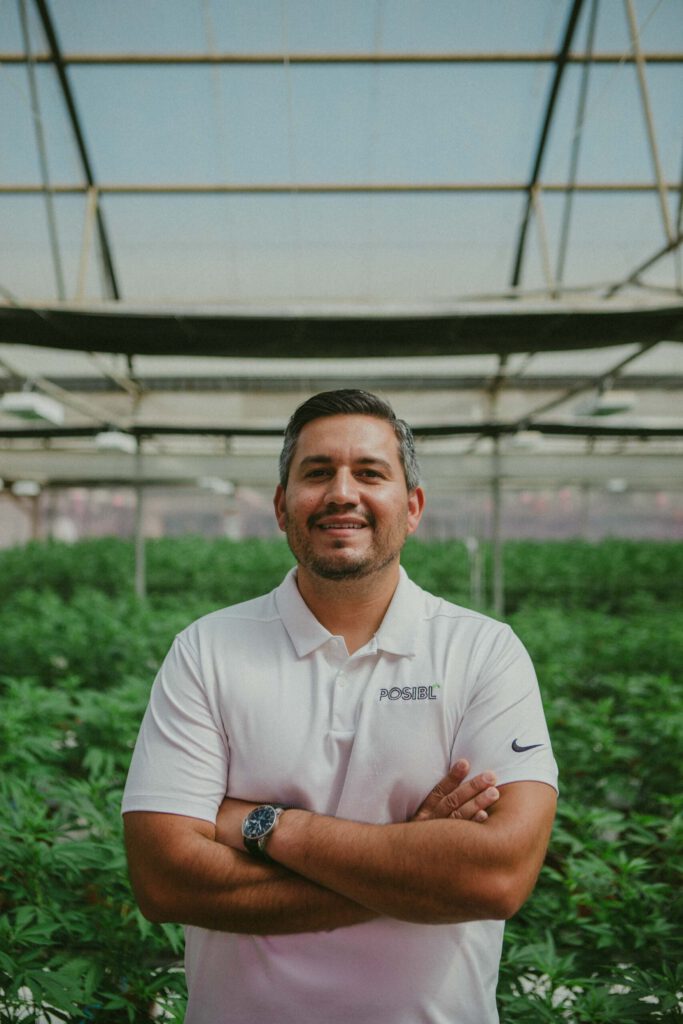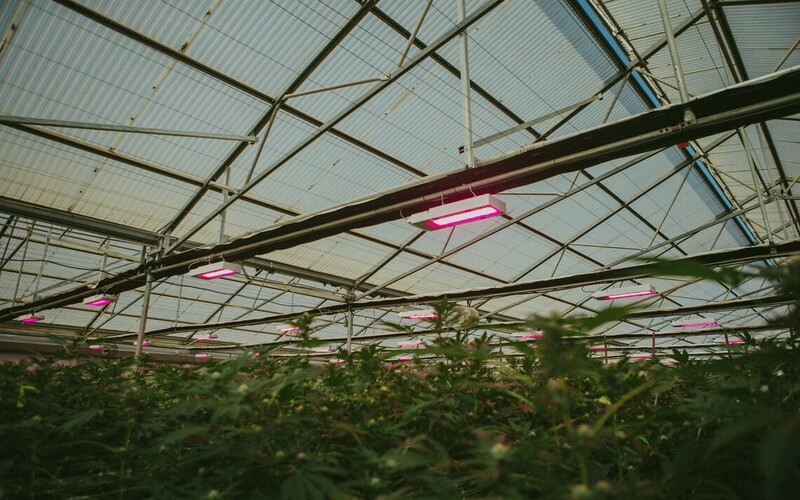Jesús Burrola takes a hands-off approach to farming, but that doesn’t mean he’s disengaged. As chief executive officer for Posibl, he’s leveraging state-of-the-art automation technology to bring smart greenhouses to a nationwide audience.
Posibl’s pesticide-free, climate-controlled greenhouses use less water per pound than traditional indoor grows and are three times more energy efficient.
The company’s motto is, “With good will and great work, anything is Posibl.”

“The business concept behind Posibl was to become an empowerer of brands and set up the best cultivation we possibly could,” Burrola told Cannabis & Tech Today during a recent interview. T
his dedication to quality cultivation enabled Posibl to partner with 15 of the largest cannabis brands in the United States. The company sells under its name and sells its flower to other brands for their labels.
More partners for Posibl means more sustainably-grown flower for customers. Everything Posibl does begins in the greenhouse — a cultivation method that’s less resource-intensive and provides a robust terpene profile thanks to natural sunlight.
Green Tech in Action
Burrola is an ardent supporter of sustainable practices.
“We believe greenhouse cultivation is best,” Burrola said.
“We approached [our business] with the core belief that we would grow indoor-quality flower in a greenhouse setting, in a much more sustainable way, in a more affordable way for the consumer.”

He believes automation technology is central to making that dream a reality.
Posibl uses sensors throughout its greenhouses to measure humidity, temperature, ventilation, irrigation, and lighting.
All the data is collected and then adjusted automatically to the ideal spectrum for those variables.
“Technology moves at a very fast pace. We have things like AI cameras we’re piloting that can detect pests and diseases faster than the naked eye,” he added.
Location is Everything
It’s not just how the plants are grown, but where Posibl is located that makes sustainable cultivation attainable. California’s fertile soils and warm climate are ideal for cannabis farming.
“We are taking advantage of natural elements, so we don’t supplement light from zero to a hundred. We’re starting with a baseline, using natural sunlight and then supplementing what is left to cover the plant’s ideal needs. That same theory applies to everything else,” Burrola said.
“We’re able to take advantage of good growing conditions naturally and only supplement that through technology and the use of energy when we need to.”
Engineered Resilience
Sustainability is a nuanced term. It can mean “environmentally friendly,” in that the resources required will still be available in the future because thay’ve been used responsibly. It can also refer to how resilient a business is when facing natural disasters or other unforeseen occurrences.
More than 4.5 million homes and businesses lost power during Texas’ February 2021 power crisis.
Yseut Berlingeri-Stambaugh of My Epicurean Farm told the Dallas Morning News she lost 80% of her microgreens during the outage.
Her greenhouse wasn’t equipped to endure 15 hours of single-digit temperatures, despite the propane-powered space heaters she fired up to battle the cold.
Cogeneration, or combined heat and power (CHP) systems, offer farmers an opportunity to be self-reliant.
CHP systems provide heat, cooling, and electricity to greenhouses on-site, facilitating uninterrupted energy production.
According to the Department of Energy, only 11 commercial greenhouses nationwide are using cogeneration units as of 2021. Posibl is one of them.

“One of the cool things we are incorporating into this project is energy cogeneration through the use of natural gas,” Burrola said. “Burning natural gas, you’re producing CO2, which we then pump back into the plants.”
The CHP Alliance found that CO2 enrichment as Burrola described can increase crop photosynthesis by as much as 50%.
Little Things Add Up
To add to Posibl’s sustainability mission, it collects drainage from its crops and reintroduces that water into the irrigation cycle.
It does not use pesticides; it treats plants with mint oil or orange peel and uses beneficial bugs to “fight nature with nature,” as Burrola said.

He feels the most challenging aspect of sustainable agriculture is giving crops enough light. Creating top-shelf quality nugs requires more sunlight than nature can provide.
Burrola believes lighting is also the easiest place for growers to start sustainable practices. “Using LEDs as opposed to HPS just makes the use of light and electricity much more efficient,” Burrola said.
He added that while LEDs cost more than HPS, utility companies offer programs that make LEDs more affordable.
It seems growers are more than willing to invest in tech to encourage larger yields.
“Like a lot of traditional crops, you’re operating on 5% margin businesses. I think the fact that it’s such a pricey crop encourages you to invest more on the technology that can produce 4 or 5% more yield makes a huge difference in profit and loss in a cannabis setting,” Burrola said.
Growing Responsibly
Cannabis is a resource-intensive crop. Some researchers estimate it’s responsible for about 1% of electricity usage in the U.S.
But growers are adopting more efficient technology and practices — and it’s starting to show. Politico reported the average energy consumption of indoor grows decreased by more than 20% between 2018 and 2020.
It’s tempting to say technology will save mankind from the climate crisis, or at least delay the inevitable. But it takes more than clever tech to solve the issues facing society.
The solution will come from motivated, caring individuals and corporations committed to creating change. “As the industry matures, we all have a responsibility to make sure we’re growing sustainably and responsibly,” Burrola said.
Want More Like This? Read the latest issue of Cannabis & Tech Today for free.
Header image courtesy of Ben Lalande.
Author
-

Patricia Miller is an executive editor at Innovative Properties Worldwide. She explores science, technology, and policy shaping the legal cannabis sector. Follow her work when you subscribe to Cannabis & Tech Today at cannatechtoday.com/subscribe/ or visit her website https://patriciamiller.squarespace.com/.







